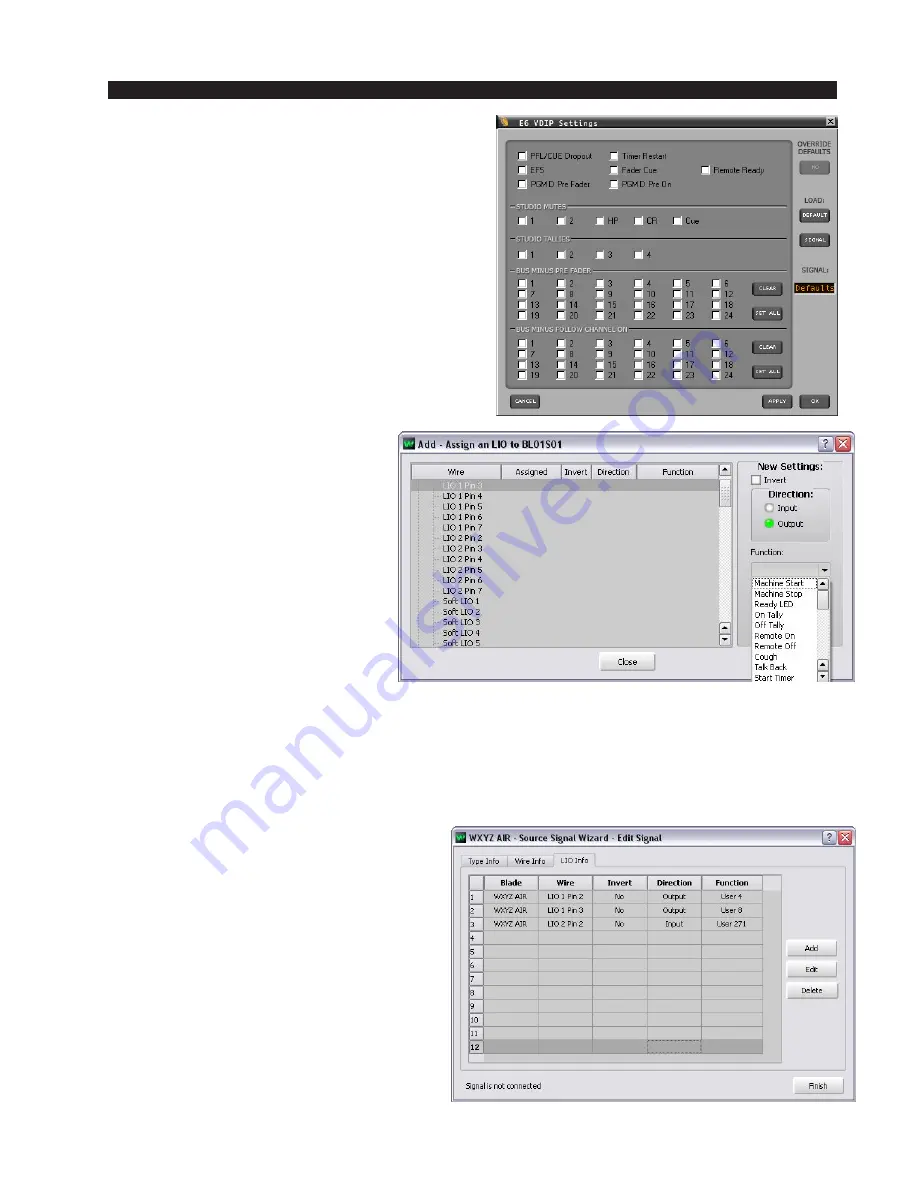
W H E A T N E T - I P S Y S T E M O P E R A T I O N A L M O D E S
page 2 – 21
WheatNet-IP
/ Apr 2009
Logic functions in the WheatNet-IP system
come in a number of different types. First there is
the simple but direct self contained functions that
are typically found in consoles and control sur-
faces. “If this mic channel is on then mute the
control room output” and “if this channel is
turned on then start the timer” are examples of
direct logic. In the WheatNet-IP system, these
functions and many more similar ones are pro-
grammed in the VDIP screens of the control
surfaces.
A second type of logic in the WheatNet-IP
system is audio associated logic. A “START” or
“STOP” command for a playback device or an
“ON” or “OFF” command for a
microphone channel is an example
of audio associated logic. What we
mean by audio associated is that the
particular logic function is “associ-
ated with,” or “belongs to” the au-
dio signal being programmed. For
instance, playback deck 1 of your
Automation PC has a START com-
mand reserved only for deck 1, and
playback deck 2 has a similar
START command reserved for
deck 2. If you make audio connec-
tions between these playback decks
and faders 1 and 2 of a control
surface, how can you use the buttons on the surface to activate the playback? In the
WheatNet-IP system, audio channels can have these common logic functions
“associated” with the audio such that any other device (such as a control surface for
instance) that has matching logic functions associated with it will allow the logic
functions to work as long as there is a crosspoint connection (which is of course
necessary for the audio to flow) between
them. Audio associated logic is very pow-
erful, because the “associations” take care
of most of your common logic functions
without lots of physical wired connections
or undue programming. In the WheatNet-IP
system, as many as 12 logic functions can
be attached to each audio signal.
A third type of logic in the WheatNet-IP
system is discrete logic. In this case you
have some input device somewhere that
needs to control some output device some-
where else. A profanity delay DUMP but-
ton is a good example. This is where the 12
physical logic connections on each BLADE
WheatNet-IP
/ June 2010
















































